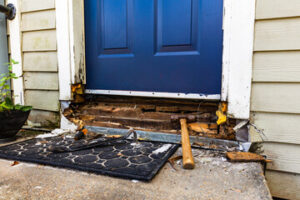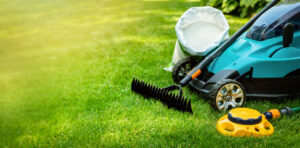Tulsa Massage involves manipulation of the soft tissues of the body. Practitioners use a variety of techniques such as effleurage, petrissage and kneading.

Studies suggest that massage may help relieve pain, reduce anxiety and depression, and improve the function of the immune system. It also enhances blood flow which brings oxygen to tissues and helps remove waste products.
When it comes to maintaining optimal health, good circulation is a key factor. This vital system is responsible for transporting blood, oxygen and nutrients throughout the body to all tissues and organs. While poor circulation can contribute to a variety of ailments, massage has been shown to improve it.
Whether you’re seeking a home massager or a professional massage, many techniques are known to boost circulation, but how exactly does this work? This blog post explores how massage enhances circulation by affecting the functionality of blood vessels and tissues. It also discusses conditions that benefit from improved circulation, such as muscle recovery and enhanced immune function.
Tight and constricted muscles can negatively impact circulation by reducing the flow of blood through the vessels that feed them. Massage relieves tension, loosening the muscles and allowing the body’s natural process of circulation to take over. This, in turn, promotes nutrient delivery and increases muscle function.
Another way that massage improves circulation is by stimulating the lymphatic system, which works in tandem with the circulatory system to remove waste and excess fluids from the body. Massage stimulates the lymphatic system by increasing the flow of fluid, aiding in the removal of toxins and metabolic waste from the body. In addition, massage can help to reduce swelling in the soft tissue caused by injury or disease.
Regular massage can also help to prevent blood clots by promoting smoother, more consistent blood flow and preventing stagnation in the blood vessels. This is especially important for those at risk of cardiovascular disease or thrombotic conditions.
There are several techniques that can significantly enhance circulation, including Swedish and deep tissue massage. The pressure created during these types of massages, along with the rhythmic squeezing and pulling motions, help to move blood through congested areas by expanding and contracting the blood vessels. This, in turn, supports a healthy circulation and helps to alleviate the buildup of lactic acid, thus decreasing muscle soreness and enhancing recovery.
Reduced Pain
Massage can significantly reduce both acute and chronic pain by breaking down adhesions, enhancing circulation, and decreasing muscle tension. This natural approach to pain management can help reduce your reliance on pain medication and promote healing.
During massage, heat is generated between the hands and body, which expands the client’s blood vessels. This allows more blood to flow, bringing in more oxygen and whisking away waste products, which in turn speeds up the body’s recovery processes. It also warms up muscles and soft tissue, which makes them pliable and responsive to treatment.
Although most people associate massage with a day at the spa, it is increasingly being offered as an integral part of specific medical treatment plans in hospitals and in settings such as hospices. This is because scientific research has shown that massage has several health benefits, including reducing stress and pain.
When muscles are contracted, they compress nerves around them, preventing them from receiving the signals they should be sending to the brain. When those nerves are freed from compression, they can assume their normal functions. Massage may be particularly helpful for tense and painful neck and back muscles.
Many patients experience a deep sense of relaxation during massage, which in turn reduces anxiety. This is a significant benefit, especially for patients in intensive care units, psychiatric institutions, and cancer centres, where long-term anxiety often exacerbates fatigue, sleep disturbances, and pain.
In addition, massage improves the function of organs by relieving pressure on them and by removing metabolic waste from them. This is because the organs share neurological pain pathways with the muscles, bones, and nerves, which can amplify the feeling of pain when they are distressed.
Practitioners of massage and related therapies often use oils to lubricate the skin during treatment. These are called essential oils and are derived from plants. They are claimed to have pharmacological effects, both by absorption into the bloodstream and through the olfactory system, and to influence emotions, among other things. Although there are concerns that some of these oils could be cytotoxic (i.e., cause cell death) in high concentrations, adverse events from the use of massage oil are very rare.
Improved Sleep
The benefits of massage are many, and can have a significant impact on sleep. It reduces stress, lowers cortisol and increases serotonin – promoting a more restful state. This can help alleviate sleep disorders, including insomnia and chronic sleep disturbances, which can be very detrimental to health. Insomnia and sleep problems can also lead to poor work performance, mood instability, high blood pressure, heart disease, depression, diabetes, obesity, and other serious health conditions.
During a massage, the tactile stimulation causes an adjustment in the nervous system. This results in a decrease in cortisol and a rise in the production of serotonin, which serves as a precursor to the production of melatonin, which regulates the body’s sleep/wake cycles, also known as circadian rhythms. In fact, one study found that regular massage therapy could help reestablish the natural sleep-wake pattern of those suffering from chronic insomnia.
Studies have shown that massage can also improve sleep for older adults. As people age, sleep disturbances can become more common. This can be due to a variety of factors, including physical ailments and changes in circadian rhythms. However, massage therapy has been shown to increase the production of melatonin and improve the quality of sleep for those suffering from these conditions.
It is recommended that you schedule your massage in the evening and make it a part of your bedtime routine. This will give your body time to relax and ease into a more relaxed state before going to sleep. Ideally, try to incorporate a 15- to 30-minute massage before you head to bed.
If you are unable to get a professional massage, you can self-massage your hands and feet before heading to bed. This can help with a number of issues, including stress, insomnia, and chronic pain. Simply rub each hand with the thumb of the other hand, using circular and kneading motions. You can also massage the sole of each foot, focusing on the heel and ball of the foot.
It is important to note that regular massages are a great way to enhance sleep, but the key is finding the right type of massage and the best time to schedule it. Practicing good sleep hygiene, including maintaining a consistent sleep schedule and avoiding caffeine and heavy meals before sleep, can also help.
Increased Immunity
Massage appears to increase the level of serotonin in the body, a chemical that positively affects emotions and thoughts. It also initiates the parasympathetic nervous system response, which causes your heart and breathing rates to slow down and the production of stress hormones to decrease. This “relaxation response” can prevent or decrease many of the negative effects of stress and may help with psychological/emotional problems such as depression, anxiety, and fears. It can also improve immune function, which can aid in overcoming some diseases.




